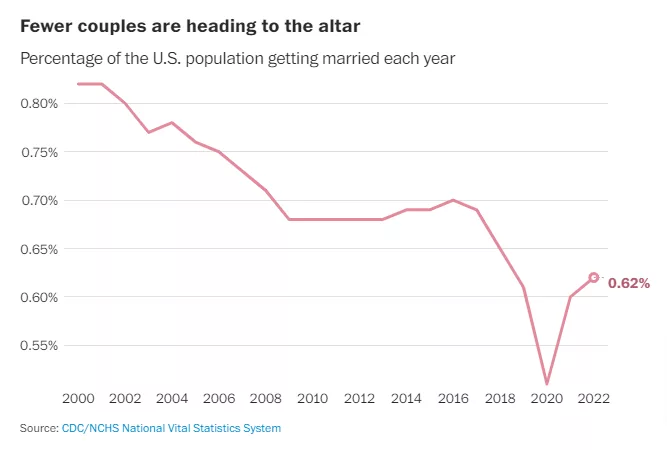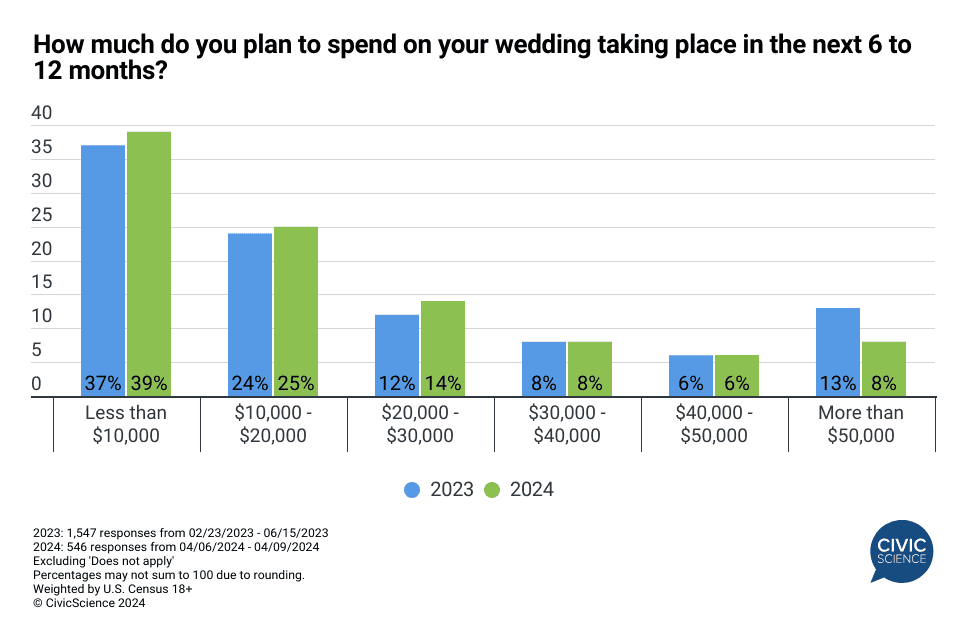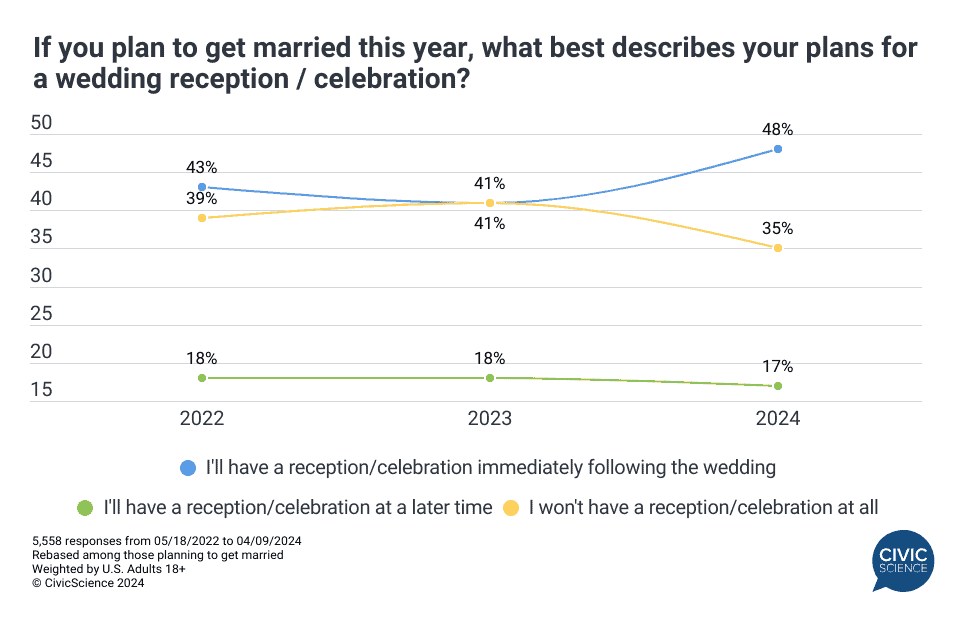The wedding industry is experiencing a significant downturn, leading to what experts are calling “the wedding gap.“
As we step deeper into 2024, the American wedding industry is witnessing a profound transformation. Economic pressures, shifting societal values, and evolving consumer preferences are dramatically reshaping how couples celebrate their union. This blog post delves into the factors driving this change, the responses from the wedding industry, and what the future may hold for wedding celebrations
Economic Influences on Wedding Decisions
The wedding industry has long been known for its lavish expenditures, but recent years have seen a dramatic shift. Persistent inflation has significantly increased the costs associated with weddings, affecting everything from catering and florals to venues and photography. According to industry experts, the cumulative effect has led to a 30% increase in costs over the past four years. This financial strain is compelling couples to downscale their plans, resulting in smaller guest lists, simpler cakes, and less extravagant bridal attire.

The financial landscape has forced a pragmatic reevaluation of wedding budgets. Shane McMurray, CEO of The Wedding Report, highlights a notable decline in spending, with couples increasingly delaying celebrations to save funds or opting for simpler formats like elopements. This trend reflects a broader economic reality where discretionary spending, especially on large-scale events, is heavily scrutinized.
Demographic Shifts and Consumer Preferences
The demographic foundation of the wedding market is also shifting. Millennials, who once drove the demand for large and extravagant weddings, are aging, and their place is being taken by Gen Z—a generation with distinctly different attitudes towards marriage and celebrations. This younger generation places a higher value on experience and personalization rather than scale and opulence.

These shifts are occurring against a backdrop of declining marriage rates, a trend that has been evident for over two decades but has been accelerated by recent economic uncertainties. Today’s couples, especially younger ones, are more likely to cohabit and delay marriage than previous generations. This has contributed to a decrease in traditional wedding ceremonies and an increase in alternative forms of celebration.
Vendor Response to Changing Market Dynamics
With the decrease in traditional weddings, vendors across the industry are finding it necessary to adapt. Many photographers, like Christopher Todd from Orange County, have shifted focus from large weddings to smaller, more intimate ceremonies and civil services. This pivot reflects not only changing market demands but also the need for business survival in a contracting industry.
Caterers and floral designers are also adjusting their offerings. As budgets tighten, these vendors are introducing more affordable options and DIY alternatives. For instance, some florists are offering bouquet assembly kits, allowing couples to create their own floral arrangements at a reduced cost. Caterers, meanwhile, are downsizing their packages to cater to smaller gatherings, maintaining quality while reducing the scale.
Innovative Business Models and Services
In response to these challenges, new business models and services are emerging within the wedding industry. Companies are increasingly offering packages tailored to elopements and micro-weddings, which require fewer resources but still provide a memorable experience. These packages often include the essentials such as a venue, officiant, photography, and some decor, catering to couples who desire simplicity without sacrificing the essence of their special day.
Digital tools and platforms are also becoming indispensable in the planning process. Websites like The Knot and Zola not only facilitate easier coordination and budget management but also serve as repositories of creative ideas that can help couples plan more effectively within their financial limits. These platforms are proving crucial in helping the industry adapt to a more digital and budget-conscious clientele.
Personal Stories and Broader Impacts
The real-world impact of these industry shifts is evident in the stories of couples navigating the high costs and logistical challenges of getting married in today’s economic climate. For example, Erin Lancaster’s experience of planning a wedding amid rising costs is a testament to the broader trends. What started as a budget of under $10,000 escalated to $26,000, underscoring the unpredictable nature of wedding planning in an inflationary environment.
Moreover, surveys and studies provide quantitative insights into these changes. CivicScience data indicates a notable decline in the number of people planning lavish weddings, with a significant increase in those opting for smaller, more intimate gatherings. This data not only illustrates the scale of the shift but also helps industry stakeholders understand and respond to these changes.

Looking Ahead: The Future of Weddings
The future of weddings looks set to continue along this trajectory of change. Industry experts predict that the demand for traditional, large-scale weddings may not return to pre-pandemic levels. Instead, the market might see sustained interest in smaller, more personalized celebrations that reflect the personal values and financial realities of modern couples.
The industry’s ability to adapt to these changes will be critical. Vendors and service providers who can innovate and realign their offerings to meet new demands will likely find opportunities even in a shrinking market. Moreover, the continued integration of technology in the planning and execution of weddings is expected to play a pivotal role in shaping the next generation of wedding experiences.

Conclusion
The evolution of the wedding industry in 2024 is a reflection of broader societal and economic shifts. As couples navigate these turbulent times, the industry must also pivot, finding new ways to meet changing expectations and constraints. While the challenges are significant, they also offer an opportunity for creativity and innovation, paving the way for a new era of wedding celebrations that prioritize personalization, intimacy, and sustainability. This dynamic period invites both couples and vendors to reimagine what a wedding can be, potentially transforming the industry for years to come.




